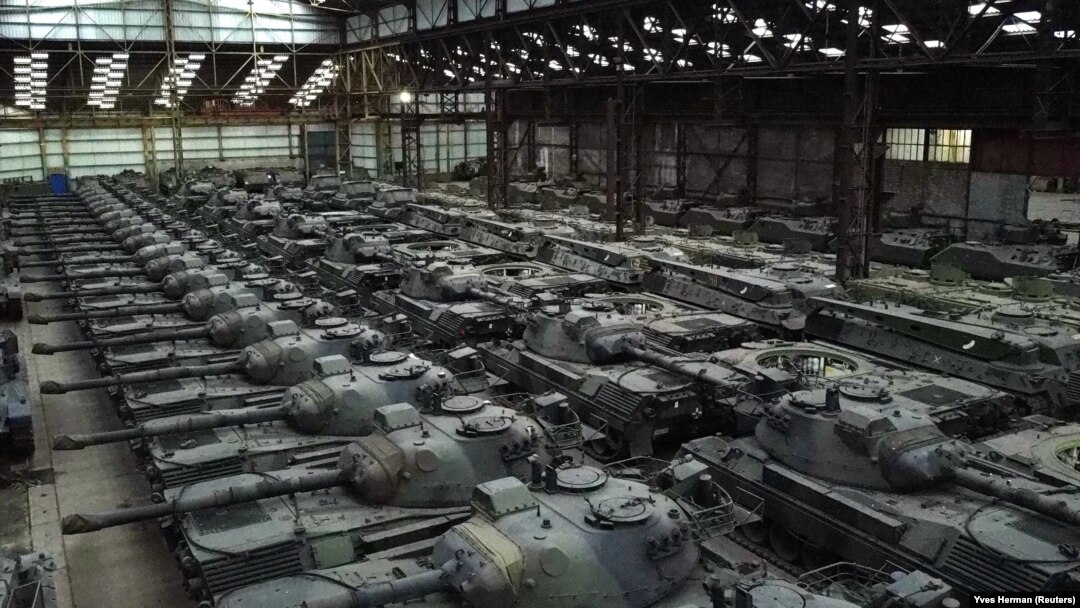Military spending worldwide rose 3.7 percent in 2022 to a record $2.24 trillion, with Central and Western Europe experiencing the largest year-on-year increase since the Cold War and Ukraine boosting its outlays to unprecedented levels as it battled to repel Russian forces that invaded its territory early in the year.
The United States, Russia, and China remained the largest individual spenders, accounting for 56 percent of the global total of military spending, according to inflation-adjusted data published on April 24 by the Stockholm International Peace Research Institute (SIPRI).
The report said military aid to Ukraine and concerns about a heightened threat from Russia strongly influenced spending by many other states, as did tensions in East Asia.
"The continuous rise in global military expenditure in recent years is a sign that we are living in an increasingly insecure world," said Nan Tian, senior researcher with SIPRI’s Military Expenditure and Arms Production Program.
"States are bolstering military strength in response to a deteriorating security environment, which they do not foresee improving in the near future," he added.
Russia launched its unprovoked invasion of Ukraine on February 24 last year in what Moscow calls a "special military operation." The invasion has since caused tens of thousands of deaths on both sides with Ukraine, backed heavily -- both financially and militarily -- by allies in Europe, North America, and other parts of the world, putting up a far stiffer resistance than Moscow appears to have expected.
SIPRI estimated that Russian military spending increased 9.2 percent in 2022, to around $86.4 billion, equivalent to 4.1 percent of Russia's gross domestic product (GDP). That's up from 3.7 percent of GDP in 2021.
"The difference between Russia's budgetary plans and its actual military spending in 2022 suggests the invasion of Ukraine has cost Russia far more than it anticipated," said Lucie Beraud-Sudreau, director of SIPRI's Military Expenditure and Arms Production Program.
Ukraine's military spending reached $44 billion in 2022 --– a whopping increase of 640 percent, with the report calling it the "highest single-year increase in a country's military expenditure ever recorded in SIPRI data."
"As a result of the increase and the war-related damage to Ukraine's economy...military spending as a share of GDP shot up to 34 percent of GDP in 2022, from 3.2 percent in 2021."
By contrast, the United States, by far the world's largest military spender, spent $877 billion in 2022, up 0.7 percent adjusted for inflation -- representing 39 percent of total global military spending and triple that of China, the second-largest spender.
Expenditures by Central and Western European states reached $345 billion in 2022 -- surpassing in real terms the 1989 level, just as the Cold War was ending.
"The invasion of Ukraine had an immediate impact on military spending decisions in Central and Western Europe," said Diego Lopes da Silva, a SIPRI senior researcher. "This included multiyear plans to boost spending from several governments."
He said that "we can reasonably expect" military expenditures in the region to keep rising in upcoming years.
Finland, which recently became the 31st member of NATO, led the rise with a 36 percent increase in military spending, followed by Lithuania (up 27 percent); Sweden, which is seeking NATO membership (up 12 percent); and Poland (up 11 percent).
"While the full-scale invasion of Ukraine in February 2022 certainly affected military spending decisions in 2022, concerns about Russian aggression have been building for much longer," said Lorenzo Scarazzato, a SIPRI researcher.
"Many former Eastern bloc states have more than doubled their military spending since 2014, the year when Russia annexed Crimea."
SIPRI said all percentage changes are expressed in real terms at constant 2021 prices.


